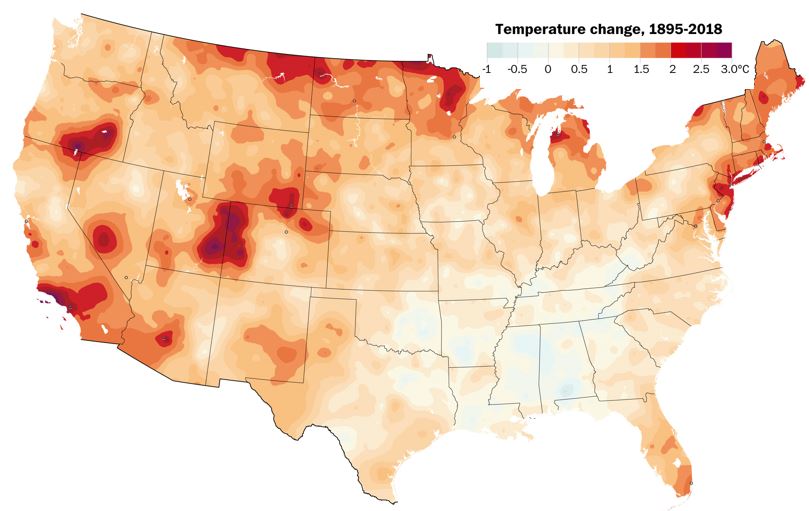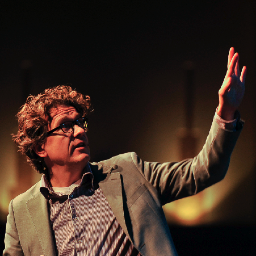People are talking about global warming, but the true story recently was revealed. Global warming is very much local. The Washington Post published a map of America, showing the changes in temperature over more than a century. The conclusion is that global warming is unevenly distributed.

Here’s the (Washington Post) map of the United States. We see the temperature rising up to 3 degrees celsius in a 123 year period. But there are some blue parts, where actually temperature has gone down. The South, especially Mississippi and Alabama, in some cases shows modest cooling. Scientists have attributed this “warming hole” to atmospheric cycles driven by the Pacific and Atlantic oceans. One in ten Americans are living in rapidly heating regions (the 2-degrees Celsius mark). Alaska is the fastest-warming state, New Jersey, Connecticut, Maine, and Massachusetts — trail close behind. The Northeast is leading the pack. In more recent decades the Southwest is catching up.
The consequences of global warming are felt locally. No more ice fishing in Lake Hopatcong, the plummeting of lobster catch in Rhode Island of 75 percent, vanishing beach houses because of rising sea levels. These things we can sort of understand. But how local ecosystems exactly are changing and how these changes impact the local economies and societies remains a mystery. Like nature itself.
To end on a positive note. Because of voter anxiety about catastrophic hurricanes, flooding, and wildfires, the climate debate is getting de-politicized. Republicans and Democrats are looking for ways to get bipartisan support for promoting clean energy technologies.

 English | EN
English | EN 
